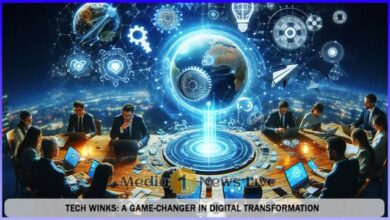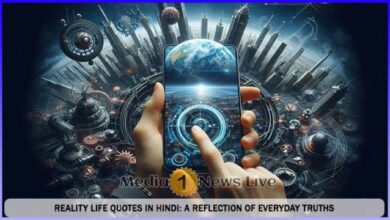How Next-Gen Web Design Trends Are Reshaping Online Experiences

Key Takeaways:
- Emerging web design trends are enhancing user engagement and satisfaction.
- Technologies like AI, 3D elements, and immersive storytelling are at the forefront.
- Staying updated with these trends is crucial for businesses aiming to remain competitive.
The landscape of web design is rapidly evolving, setting new benchmarks for how users interact with websites. Next-generation trends are not just about aesthetics, but about creating functional spaces tailored to the unique needs of each visitor. Businesses aiming to lead in their industry increasingly turn to specialized expertise, such as engaging a Web Design Agency in Salt Lake City, to stay at the forefront of these changes and ensure their websites offer memorable, seamless experiences.
From AI-driven personalization to immersive 3D environments, the expectations for a great web experience are evolving. Companies that adapt quickly can boost engagement, conversions, and brand loyalty. Focusing on innovative approaches like scroll-based storytelling and eco-friendly development helps meet consumer demands and positively impacts satisfaction and the environment. Staying ahead of these trends is now essential for success. The shift to emotion-centric design creates digital environments that resonate personally, setting apart brands that connect with their audience. For more insights on digital innovation and branding, check out The New York Times coverage of emerging web trends.
AI-Driven Personalization
Artificial Intelligence (AI) is at the core of the most substantial changes in web design, generating hyper-personalized online experiences that were once unimaginable. By analyzing behavioral data such as browsing habits, location, and even real-time interactions, AI algorithms can craft dynamic websites that instantly adapt to each user’s preferences. This results in not only a more engaging journey but also significantly higher conversion rates, as users are presented with content and products most relevant to them. For example, streaming platforms like Netflix have refined their recommendation engines to such an extent that they have become industry benchmarks, resulting in extended user sessions and improved viewer retention.
Immersive 3D Elements
With advancements in browser technologies and internet speeds, 3D has become accessible and highly impactful in web design. Brands, particularly in e-commerce, now utilize 3D product visualizations to enable visitors to explore items in detail, as if they were physically present in a store. This interactivity isn’t limited to retail; educational websites, real estate, and entertainment platforms are also embracing 3D graphics to communicate information in dynamic, memorable ways. These elements bridge the gap between digital and tangible experiences, fostering a deeper level of user involvement and satisfaction.
Scroll-Based Storytelling
Scroll-based storytelling transforms passive browsing into a rich, interactive journey. Rather than overwhelming visitors with information or static visuals, this technique leverages users’ natural scrolling behavior to unfold stories and information at a comfortable, engaging pace. According to industry studies, implementing scroll-driven narratives has substantially boosted both content retention and session duration. One study reported a 70% increase in time-on-page and a 63% improvement in content recall.
Patagonia’s 2023 “Blue Heart” campaign employed this method to convey environmental stories with both emotional and factual resonance, resulting in a 230% increase in engagement and a notable rise in donations. Technical advancements fueling these experiences include JavaScript libraries such as ScrollMagic and efficient use of CSS animations, making it easier for brands to build high-impact, story-driven sites without compromising on loading speed or accessibility. Mailchimp’s redesign exemplifies how brands can blend storytelling with improved performance to achieve a dramatic business impact.
Sustainable Web Design
As the world becomes increasingly aware of environmental impacts, sustainable web design has quickly become a core consideration for leading brands. Techniques include lightweight code, image compression, server optimization, and choosing renewable hosting solutions to minimize a site’s carbon footprint. Wholegrain Digital, for example, pioneered a carbon-neutral website, reducing emissions 75% below the industry average through efficient coding and green hosting methods. This shift isn’t just about responsibility; it’s about consumers increasingly demanding ethical business practices.
Neurodesign and Emotion-Led UX
The focus of web design is moving from surface-level flair to deep, psychological engagement. Neurodesign and emotion-led UX prioritize colors, symmetry, rhythmic visual patterns, and micro-interactions to guide users’ feelings and decisions subtly. Brands are utilizing these insights to create environments that evoke specific emotions, influence purchasing decisions, and foster long-term brand affinity. This science-backed approach is particularly valuable for companies seeking to differentiate themselves in saturated markets and create memorable experiences.
Conclusion
As digital interactions set new expectations for usability and engagement, businesses must adopt AI-driven personalization, immersive 3D experiences, scroll-based storytelling, sustainable design, and emotionally intelligent user experiences to stand out. Adopting these innovations is more than a design choice—it’s a strategic imperative for brands aiming to secure customer loyalty, improve conversions, and lead the market through the next wave of digital transformation.



